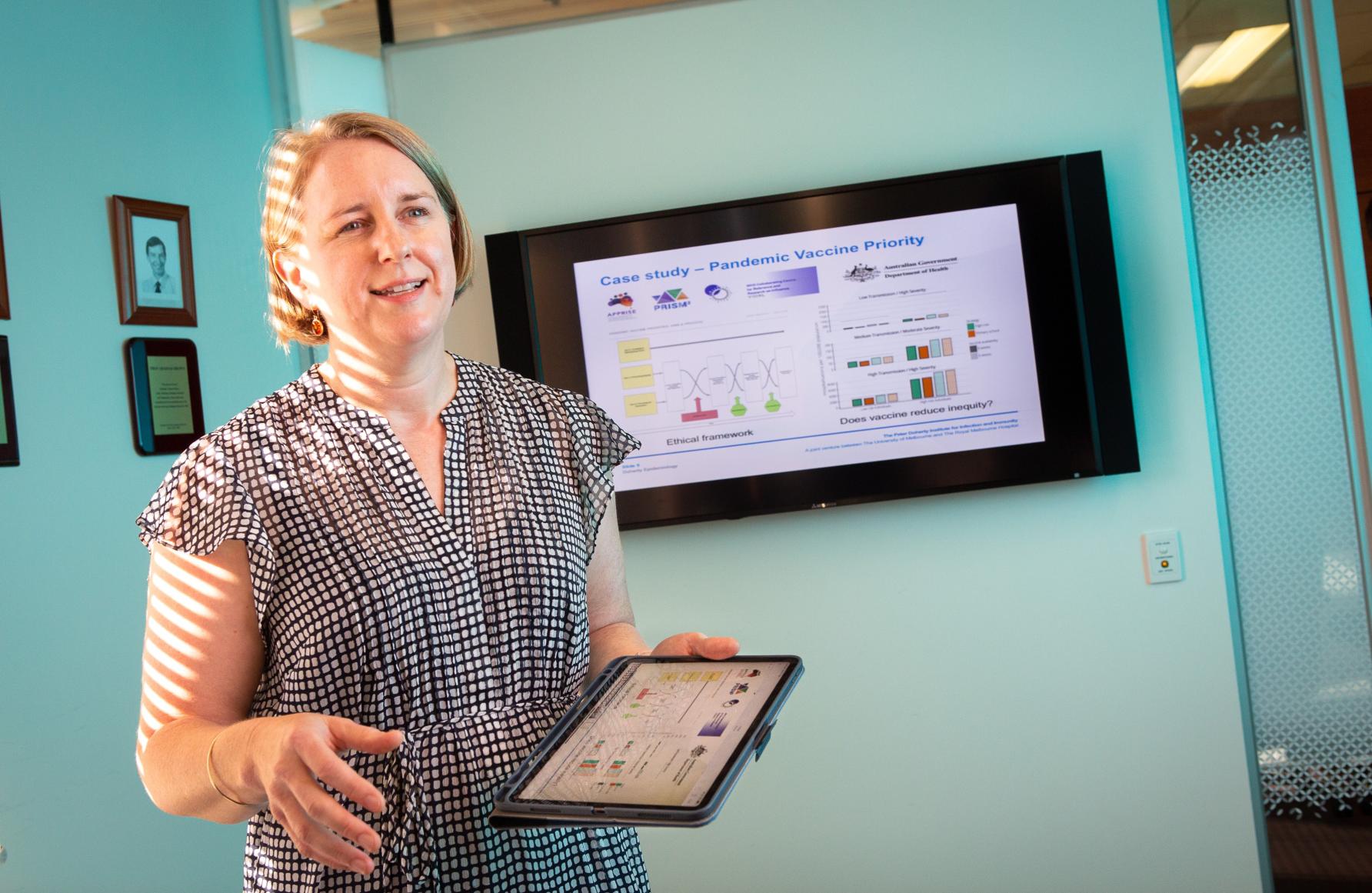18 Mar 2019
Protecting the world from the threat of pandemic
Creating mathematical and computational models of infectious diseases like pandemic flu gives government and policy-makers a toolkit to respond to this ever-present threat
By Anders Furze, University of Melbourne

Professor Jodie McVernon
This is an exerpt from an article originally published on Pursuit.
Bill Gates recently issued a stark warning to the world.
“We can’t predict when,” he told the Massachusetts Medical Society last year, “but...there is a significant probability of a large and lethal, modern-day pandemic occurring in our lifetimes.”
He has similarly reflected that while people rightly worry about dangers like terrorism and climate change “if anything is going to kill tens of millions of people in a short time, it will probably be a global epidemic. And the disease would most likely be a form of the flu, because flu spreads easily through the air.”
Indeed, Professor Jodie McVernon, the Director of Epidemiology at the Doherty Institute, notes that infectious diseases are an ever-present threat.
“With the increase of global travel and trade, new infections can spread rapidly across countries and continents,” she says.
And if you thought bird flu was no longer a threat, think again.
“Avian influenza remains one of the highest risks to human health,” she says, “with the possibility that new strains of flu could cross over from birds to humans and become infectious enough to cause a global pandemic.”
Professor McVernon is leading a research team that is collaborating with public health professionals to create mathematical and computational models of infectious diseases such as pandemic flu. Their research is directly informing public health policy on a global scale.
“My work aims to help public health decision-makers and policy-makers plan for these future unknowns,” she says.
“We develop models that simulate multiple possible pandemic scenarios of different infectiousness and severity and consider what their likely impacts will be on the health system and society.”
The models chart what might happen in an epidemic under a range of different scenarios.
“I use a chunky Lego block analogy,” Professor McVernon explains. “We basically say people are either susceptible, infectious or recovered. We can then build up these simple Lego blocks into quite complex representations of society, to simulate an epidemic.”
They also help to guide thinking about the best strategies to use and inform decisions about stockpiling critical medicines and protective equipment.
“We model diseases like pandemic flu based on what we’ve observed in the past, to consider what we might see in the future. We then run many thousands of simulations and build in different measures to control disease like vaccinations and antiviral drugs, to see how they can best be used to prevent disease.”
To read the full article, please visit the University of Melbourne's Pursuit website.


